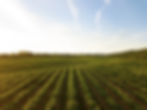Israel: Land of the Birds
A guest blog by: Susan R. Eisenstein
I love to be out in nature, walking about and listening to birds. If you look closely enough, you can identify the birds you see all around you. But if you listen just a bit more closely, you may be able to identify a bird through its song, before even seeing it! Birdwatching is a popular sport all over the world. It is peaceful, exciting, and brings a deep connection with the world around you. Different seasons bring with them different bird visitors, depending on the climate and landscape.

For birdwatching, the tiny country of Israel is definitely the place to be! Israel is blessed with a beautiful and varied landscape, allowing for many distinct ecosystems, ranging from the snow-capped Mount Hermon, the volcanic plateau of the Golan Heights, and the coral reefs and mountains of Eilat, to the green of the Galilee in the North, and the Negev Desert in the South. There is also the Hula Valley wetlands of the River Jordan and the Savannas of the Arava Desert, as well as the sandy Mediterranean Coast and the limestone mountains of Jerusalem. Because of Israel's unique geographical position as a crossroads of three continents, it is home to some 2,800 species of plants, more than 500 species of birds, and 100 species of mammals!
Located along the African-Eurasian flyway, Israel hosts over 500 million migrating birds each year. Twice a year, 500 million birds make their way through Israel; most are on their way back and forth from their nesting grounds in Europe and Asia and their wintering grounds in Africa. Israel is a biodiversity hotspot.
Most birds stop in Israel for what would be considered a brief refueling, as they then continue on their journey home. However, some birds remain in Israel for the entire winter. Life for birds can be challenging. Everything they do is a cycle of “live---survive---reproduce”. And that is why Israel is really important for so many birds. After flying 5 days with no food or water over the Sahara Desert, many birds land in Israel exhausted, and need to eat! If it were not for Israel and her trees, bushes, and ponds, tens of thousands of birds would not be able to complete their annual migrations. It would be a great loss to Asia, Europe, and Africa.

The Society for the Protection of Nature in Israel (SPNI), Israel's oldest and largest environmental non-profit organization, is working to create a sustainable future for Israel and its vast nature. SPNI has developed an array of educational programs that bring together Israelis, Palestinians, and Jordanians through "Birds Know No Borders", which allows youth to learn about birdlife through art and music. There are also educational curriculums and training programs for staff in hundreds of schools across the country.
SPNI addresses tensions between farmers and migrating birds as well, in order to create a safe environment for both birds and Israeli agriculture! Pelicans, storks, and cranes eat tons of fish and grains during their stay in Israel, and it is something many farmers must face. Also, with so many birds flying over Israel, there are collisions between planes and birds, which have cost us both human and birds lives, as well as millions of dollars. Through research, conservation, and special projects, SPNI works to alleviate these problems.
Birdwatching tourism is a big business for Israel, where billions of dollars are spent by over 100 million birdwatchers worldwide in pursuit of their hobby. SPNI seeks to develop Israel's birding infrastructure with many governmental ministries. There are two Israeli bird festivals- the Eilat Bird Festival and the Hula Bird Festival. They are held at the peak of the Spring and Autumn migration seasons, when some 500 million birds fly over Israel. During these peak times, birdwatchers can catch sight of 150 to 200 species of birds.

Here are some favorite birdwatching places to visit when in Israel. Happy birdwatching!
1. Jerusalem Bird Observatory
The JBO is a magnet for many common migrating and wintering birds, such as Wrynecks, Collared Flycatchers, masked and Red-Backed Shrikes, and Thrush Nightingales. Winter visitors include European Robins, Hawfinches, and Bramblings. Many resident Israeli birds make their home at the JBO, including the Palestine Sunbirds, Spectacled Bulbuls and Israel's national bird, the Hoopoe. The endangered Lesser Kestrels can be seen nesting in springtime in nearby Musrara and many Short-toed eagles and Little Owls can be found in the hills surrounding the city.
2. Hula Valley Bird Watching Center
This is where the 500 million birds of different sorts and species stopover on their flights between Europe and Africa. The main migrating season is in the fall, when pelicans, herons, storks and cranes arrive in huge flocks, along with birds of prey and other winged species.
3. Mount Hermon Summit
To see special birds, visit Mount Hermon between the middle of April to the middle of July. The main species that you will find here are: All year round: Rock Bunting, Crimson-winged Finch, Sombre Tit, Western Rock-Nuthatch and Horned Lark. Spring/summer: White-throated Robin, Rock Sparrow, Syrian Serin, Pale Rock-Sparrow and Upcher's Warbler. Winter: Red-fronted Serin and Pine Bunting
4. Bird Sanctuary it Eilat
Eilat is a major junction on the bird's migration flyway. It is also one of the most important stopover sites for migratory birds in the world.








